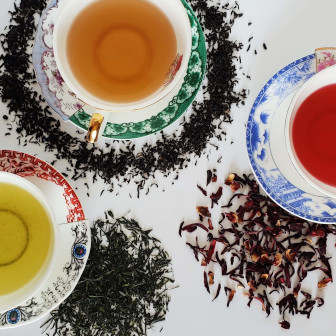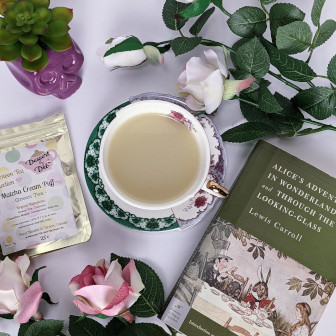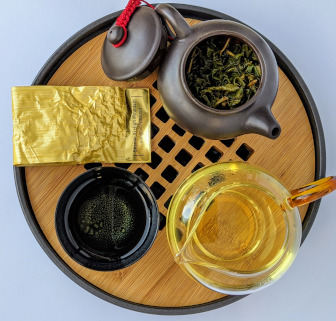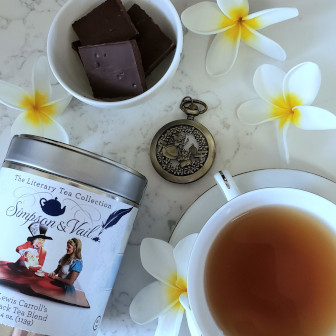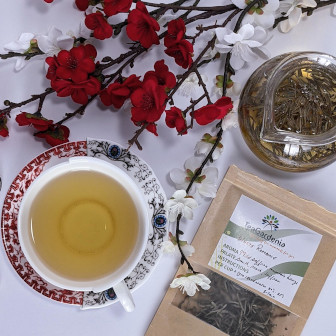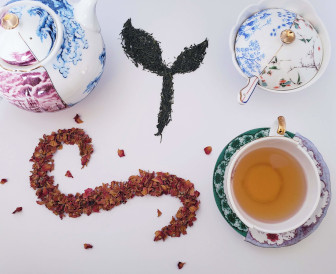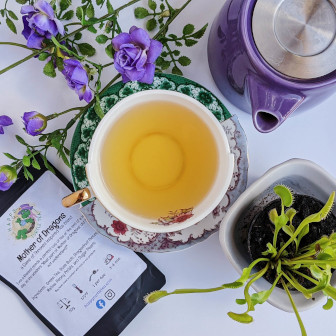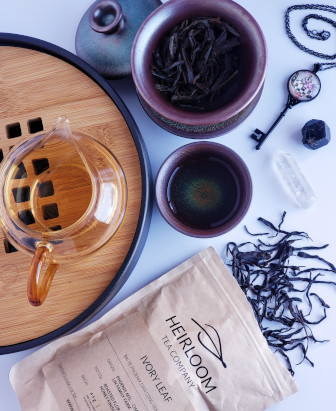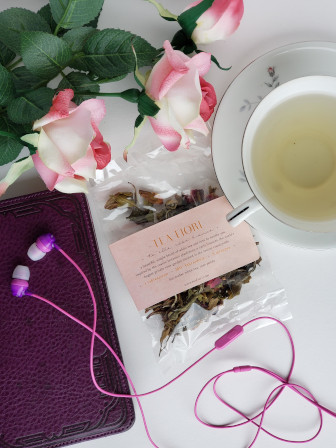Camellia Sinensis
What is tea and how is it made?
Tea processing is the method in which the leaves from the tea plant Camellia sinensis are transformed into the dried leaves for brewing tea. After processing, a tea may be blended with other teas or mixed with flavourants to alter the flavor of the final tea. When producing black, pu'erh and oolong teas there is an additional purpose of processing: to encourage oxidization, which further develops flavour and aroma compounds.
- Green tea has undergone the least amount of oxidation. The oxidation process is halted by the quick application of heat after tea picking, either with steam, the method preferred in Japan, or by dry roasting and cooking in hot pans, preferred in Chinese tea processing. Tea leaves may be left to dry as separate leaves or they may be rolled into small pellets to make gunpowder tea. The tea is processed within one to two days of harvesting. Green tea leaves undergo fixation by either roasting (panning) or steaming. Generally, roasted varieties are richer in flavor, while steamed varieties are more vivid in color.
- White tea consists of the young leaves or new growth buds that have undergone limited oxidation through a slight amount of withering while naturally sun dried or specifically withered and then halting the oxidative processes by baking with the optimal withering conditions at 30 degrees Celsius (65% relative humidity) for 26 hours. Withering of the leaves can last from around one to three days depending on the season and temperature of the processing environment. The buds may be shielded from sunlight to prevent the formation of chlorophyll. The tea leaves meant for white teas are not kneaded nor undergo fixation, which preserves much of the white hair on the leaves and gives the tea a relatively mild flavour.
- Oolong tea's oxidation is stopped somewhere between the standards for green tea and black tea. The processing typically takes two to three days from withering to drying with a relatively short oxidation period of several hours. Common wisdom about lightly oxidized teas in Taiwan (a large producer of Oolong) is that too little oxidation upsets the stomach of some consumers. Even so, some producers attempt to minimize oxidation in order to produce a specific taste or allow the tea leaves to be easily rolled into the spherical or half-sphere form demanded by buyers in the market.
- Black tea leaves are allowed to completely oxidize. Black tea is first withered to induce protein breakdown and reduce water content (68–77% of original). The leaves then undergo a process known in the industry as disruption or leaf maceration, which through bruising or cutting disrupts leaf cell structures, releasing the leaf juices and enzymes that activate oxidation. The oxidation process takes between 45 and 90 minutes to 3 hours and is done at high humidity between 20 and 30 °C, transforming much of the catechins of the leaves into complex tannin. Orthodox processed black teas are further graded according to the post-production leaf quality by the Orange Pekoe system, while crush, tear, curl (CTC) teas use a different grading system. Orthodox tea leaves are heavily rolled either by hand or mechanically on a cylindrical rolling table or a rotor vane.
Tisanes, or herbal teas, are a completely different type of beverage. When a tea is made without the leaves of the camellia sinensis plant, it is, by definition, not a tea, but an herbal tisane. There are many lovely tisanes out there, including mint, rose, lavender, lemongrass, chamomile, and many more. While they are technically not teas, it is still acceptable to call them teas as they are often brewed and drunk in the same manner, and often in conjunction with actual tea leaves.
Learn MoreFirst step is picking the tea leaves.
Camellia sinensis leaves grow on tea farms all over the world.
Tea leaves and flushes, which includes a terminal bud and two young leaves, are picked from Camellia sinensis bushes typically twice a year during early spring and early summer or late spring. Autumn or winter pickings of tea flushes are much less common, though they occur when climate permits. Picking is done by hand when a higher quality tea is needed, or where labour costs are not prohibitive. Depending on the skill of the picker, hand-picking is performed by pulling the flush with a snap of the forearm, arm, or even the shoulders, with the picker grasping the tea shoot using the thumb and forefinger, with the middle finger sometimes used in combination. Tea flushes and leaves can also be picked by machine, though there will be more broken leaves and partial flushes reducing the quality of the tea. However, it has also been shown that machine plucking in correctly timed harvesting periods can produce good leaves for the production of high quality teas.
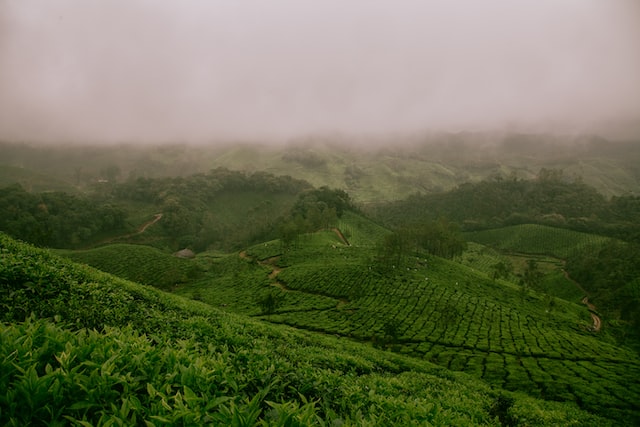
Next steps are withering and oxidation
The tea leaves will begin to wilt soon after picking, with a gradual onset of enzymatic oxidation. Withering is used to remove excess water from the leaves and allows a very slight amount of oxidation. The leaves can be either put under the sun or left in a cool breezy room to pull moisture out from the leaves. In a withering room, leaves are spread out along troughs for 8-14 hours, usually overnight. During this time 35 per cent of moisture is lost. The appropriate conditions for withering, such as temperature and relative humidity, are not readily defined in literature as it can vary depending on climate, producing region and type of process used. However, variations in the rate of withering, such as a hard or soft wither, has been shown to influence flavor compounds. The leaves sometimes lose more than a quarter of their weight in water during withering. The process is also important in promoting the breakdown of leaf proteins into free amino acids and increases the availability of freed caffeine, both of which change the taste of the tea.
Known in the Western tea industry as disruption or leaf maceration, the teas are bruised or torn in order to promote and quicken oxidation. The leaves may be lightly bruised on their edges by shaking and tossing in a bamboo tray or tumbling in baskets. More extensive leaf disruption can be done by kneading, rolling, tearing, and crushing, usually by machinery. The bruising breaks down the structures inside and outside of the leaf cells and allows from the co-mingling of oxidative enzymes with various substrates, which allows for the beginning of oxidation. This also releases some of the leaf juices, which may aid in oxidation and change the taste profile of the tea.
For teas that require oxidation, the leaves are left on their own in a climate-controlled room where they turn progressively darker. This is accompanied by agitation in some cases. In this process the chlorophyll in the leaves is enzymatically broken down, and its tannins are released or transformed. The tea producer may choose when the oxidation should be stopped, which depends on the desired qualities in the final tea as well as the weather conditions (heat and humidity). For light oolong teas this may be anywhere from 5–40% oxidation, in darker oolong teas 60–70%, and in black teas 100% oxidation. Oxidation is highly important in the formation of many taste and aroma compounds, which give tea its liquor colour, strength, and briskness. Depending on the type of tea desired, under or over-oxidation can result in grassy flavours, or overly thick winey flavours. This process is sometimes referred to erroneously as fermentation in the tea industry.

Next, the leaves are rolled and dried
Kill-green or shāqīng (殺青) is done to stop the tea leaf oxidation at a desired level. This process is accomplished by moderately heating tea leaves, thus deactivating their oxidative enzymes and removing unwanted scents in the leaves, without damaging the flavour of the tea. Traditionally, the tea leaves are panned in a wok or steamed, but with advancements in technology, kill-green is sometimes done by baking or panning in a rolling drum. In some white teas and some black teas such as CTC blacks, kill-green is done simultaneously with drying.
The damp tea leaves are then rolled to be formed into wrinkled strips, by hand or using a rolling machine which causes the tea to wrap around itself. The most commonly used rolling machines are big, circular rotators that press the leaves between two grooved wooden plates which tear, squeeze and bruise the leaves. The roller machines can process up to 25kg at a time. This rolling action also causes some of the sap, essential oils, and juices inside the leaves to ooze out, which further enhances the taste of the tea. The strips of tea can then be formed into other shapes, such as being rolled into spirals, kneaded and rolled into pellets, or tied into balls, cones and other elaborate shapes. In many types of oolong, the rolled strips of tea leaf are then rolled into spheres or half spheres and this is typically done by placing the damp leaves in large cloth bags, which are then kneaded by hand or machine in a specific manner. The tea can also be pressed into bricks through the use of heavy stones or presses.
Drying is done to finish the tea for sale. This can be done in a myriad of ways including panning, sunning, air drying, or baking. Baking is usually the most common. Great care must be taken to not over-cook the leaves. The drying of the produced tea is responsible for many new flavour compounds particularly important in green teas.
While not always required, some teas require additional aging, fermentation, or baking to reach their drinking potential. For instance, a green tea puerh, prior to curing into a post-fermented tea, is often bitter and harsh in taste, but becomes sweet and mellow through fermentation by age or dampness. Additionally, oolong can benefit from aging if fired over charcoal. Flavoured teas are manufactured in this stage by spraying the tea with aromas and flavours or by storing them with their flavorants.
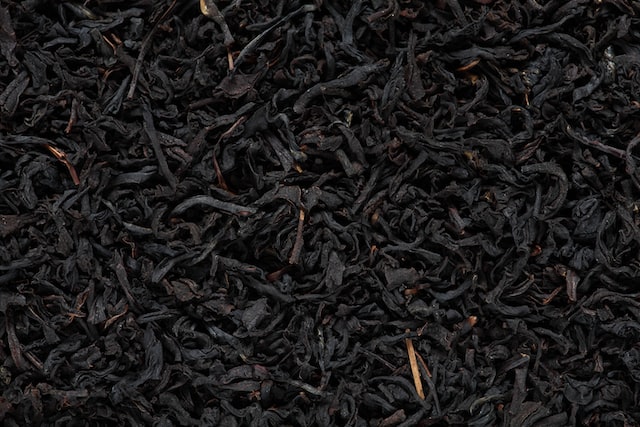
Finally, the tea is sorted, packaged and shipped.
Tea sorting can help remove physical impurities, such as stems and seeds. Using sorting equipment to improve tea production efficiency is very common in tea processing plants, especially in black tea processing. A Color sorter may also be used to classify final product grades according to color and shape.
After that, the tea is packaged and shipped to distributors, retail stores, coffee and tea shops, and directly to customers. Then you can buy a tin of loose leaf tea, a box of bagged tea, or cup of tea to enjoy.
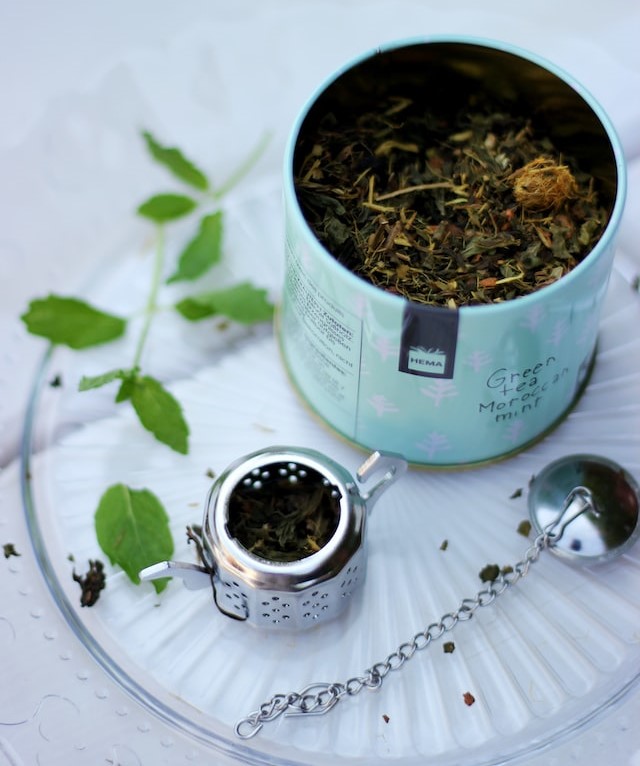
Brewing
How to brew a perfect cup of tea
Choose Your Tea
Black teas pair well with milk. Oolongs, green, and white teas are best drunk without milk or sugar. Choose a tea to fit your mood.
Brew Method
You can choose pre-packaged bagged tea, or you can scoop some loose-leaf tea into a brew basket, tea strainer, or teapot.
Water
Of course you can use tap water, but you will get the best flavor out of your tea if you brew it with filtered water.
Temperature
Brew black tea and herbal tisanes in boiling water, about 212F. Oolongs at 175-190F. Green teas at 165-175F. White teas at 145-160F. These temps are just suggestions. Follow the directions printed on the packaging.
Time
Brew black teas and herbal tisanes for ~5 mins. Oolongs for 3-4 mins. Green teas for 2-3 mins. White teas for 1-2 mins. Or follow the directions printed on the packaging.
Enjoy!
You can enjoy your tea plain, with sugar and milk, as a tea latte, or poured over ice. Tea is also perfect to share with friends, family, and loved ones.
Tea Shops
Where to order tea online?
- All
- Single-Origin
- Blends
- Novelty
F.A.Q
Frequently Asked Questions
-
Who are you?
I am just another tea-lover floating around on the internet.
-
What makes you a tea expert?
I'm no expert. I am merely a tea enthusiast. My obsession with tea started when I worked at Starbucks in college. I didn't like coffee and wanted to get into the world of tea, but I suspected that Starbucks had no idea what good tea was. I was right about that, so I ventured out, learned a lot, and found some amazing teas along the way.
-
What is your favorite tea?
That depends. Early in the morning I enjoy a flavored black tea blend like a chai or an Earl Grey. In the afternoons and evenings I enjoy green teas, especially genmaicha.
-
Okay, but if you could only choose one tea, which would you pick?
Could you choose a favorite child? A favorite limb? I could narrow it down to a favorite tea shop. If I could only drink teas from Dessert by Deb, I would be quite happy.
-
Why is it so important to you to impart your tea knowledge to us?
For a long time, I had no idea that loose-leaf tea was a thing. I thought that a bag filled with leaf dust was all that tea was. I don't want anyone else to suffer thinking that tea isn't the incredibly diverse beverage that it is.
-
Where did you learn all that information about tea processing?
I stole it from Wikipedia. Good thing this is just a school project and not a real website. Lol.
Contact
Contact Us
Location:
1234 State Street, Honolulu, HI 96817
Email:
info@example.com
Call:
+1 555-555-5555

